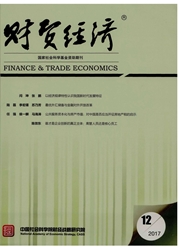

 中文摘要:
中文摘要:
本文基于Ramsey定价理论和认知价格响应假设构建了在阶梯电价基础上引入峰谷电价的政策评估模型,从定价机理角度回答了居民电价改革的理论和政策问题。本文发现,峰谷电价的引入会带来价格补贴和效率成本并存的福利效应“组合”特征,样本代表性用户在峰段会享受价格补贴,而在谷段则承担效率成本,综合效果是享受到约0.21~0.38元/KWh的价格补贴。价格补贴和效率成本均随用电量增加而增加,但变化趋势却不同。用户的用电量越多,享受补贴并非越多,而是终将消失,而且高消费用户在补贴低消费用户。这些定价特征反映出阶梯电价和峰谷电价之间存在效果冲突,难以提高电价效率和促进公平,因此全国进一步推广峰谷电价缺乏合理依据。坚持“保基本”理念的价格主管部门未能准确把握中国居民电力用户的需求特征及定价政策的实际效果。居民电价改革需在电力体制改革的框架下协调推进。居民用电定价机制的改革成效取决于市场的形成和竞争的引入,关键在于竞争性电力批发的结构重组和机制设计,而非管制定价方式的简单调整。
 英文摘要:
英文摘要:
This paper valuates the effects of the mix of increasing block pricing and peak-load pricing of China's residential electricity demand. It identifies the coexistence of price subsides and efficiency costs. Representative consumers will enjoy overall subsidies of 0.21 - 0.38 Yuan/KWh, as they enjoy price subsidy during peak period and suffer efficiency cost during valley period. Both price subsidy and efficiency cost increase as the electricity consumption grows, but they show different trends which mean that the subsidy will not increase but will vanish finally as the electricity consumption grows. The consumers using more electricity don't necessarily enjoy more subsidies. Both price subsidies and efficiency costs increase with the electricity consumption, but show different trends which means that the consumers consuming more do not necessarily enjoy more subsidies. The effects inherent between blocking pricing and peak-load pricing make it hard to promote pricing efficiency and fairness, so promoting nation-wide peak-load pricing after the introduction of blocking pricing lack sufficient and robust theoretical and practical foundation. The pricing policy decision-makers haven't accurately understood the true residential demand feature and the real effect of the pricing mix. It is strongly recommended that the residential pricing reform should be coordinated with the whole electricity institution reform, because the success of the residential reform depends on the introduction of a competitive wholesale market which can discover the true social cost of electricity, rather than alternating different regulated pricing methods.
 同期刊论文项目
同期刊论文项目
 同项目期刊论文
同项目期刊论文
 期刊信息
期刊信息
